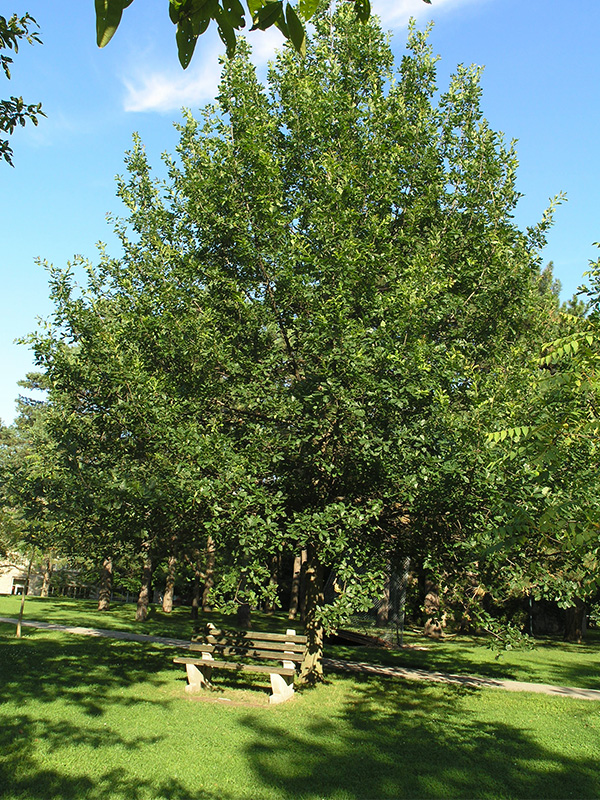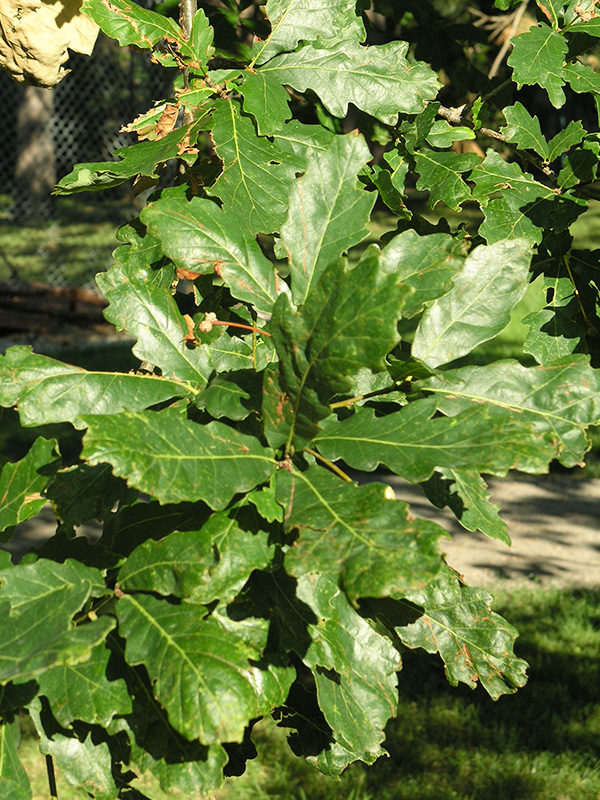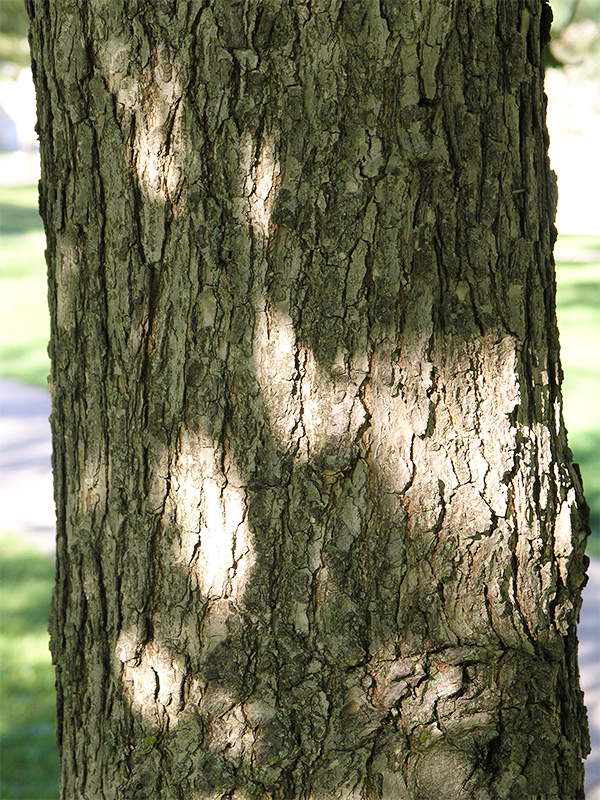| General Description | A large tree, often a rounded pyramidal form, leaves frequently blemished and best suited to the naturalized landscape. |
| ID Characteristic | Shallow lobed leaves, shiny green on top and dull underside. |
| Shape | Irregularly spreading, often horizontally, large and rounded crown. |
| Landscape | Limited use in the cultured landscape since there are many more attractive options. Suited to naturalization projects and park-like landscapes. |
| Propagation | Commonly through seed. |
| Cultivation | Moist, acidic, well drained soil in full sun. Drought tolerant. |
| Pests | Tent caterpillar, gypsy moth, oak leaftier, oak leaf-roller, scarlet oak sawfly, anthracnose, oak tatters, oak wilt and mistletoe.
|
| Notable Specimens | Basking Ridge, New Jersey, United States of America. The oldest white oak in North America (600 years old).
|
| Habitat | Dry slopes, low lands, ravines and valleys at an altitude of 0-1,600 m. |
| Bark/Stem Description | Finely fissured, scaly plates, twigs maturing and glabrous. |
| Flower/Leaf Bud Description | Ovoid, pointed and 3 mm in length. |
| Leaf Description | Elliptic, frequently blemished, 3-9 deep rounded lobes, a cuneate base, a deep red midrib and 5 - 7 secondary veins on either side of the midvein, 8-20 cm long and 5-10 cm wide. |
| Fruit Description | Acorns, long and egg shaped. About 2 - 3 cm in length. |
| Colour Description | Bark is light grey. Leaves have a bright green top, whitish-grey underside and are reddish-brown in autumn. |
| Texture Description | Smooth and thin. |


